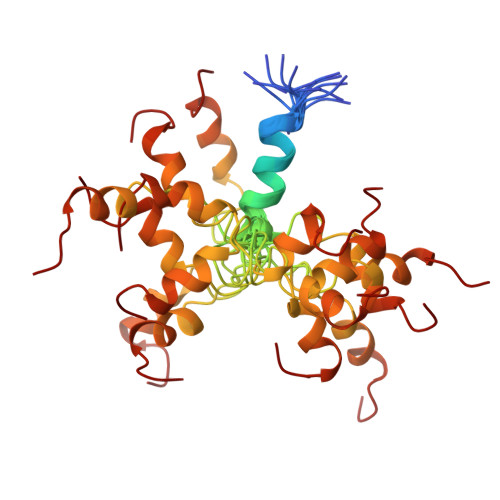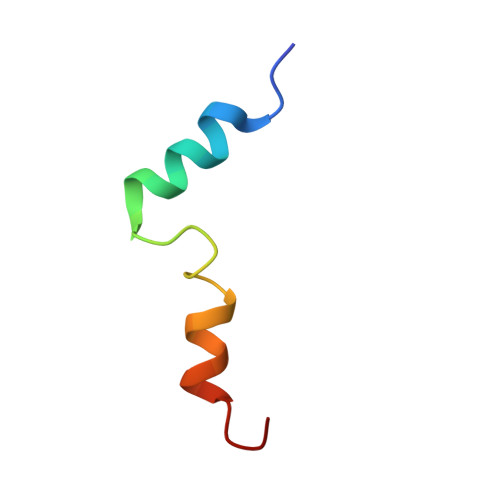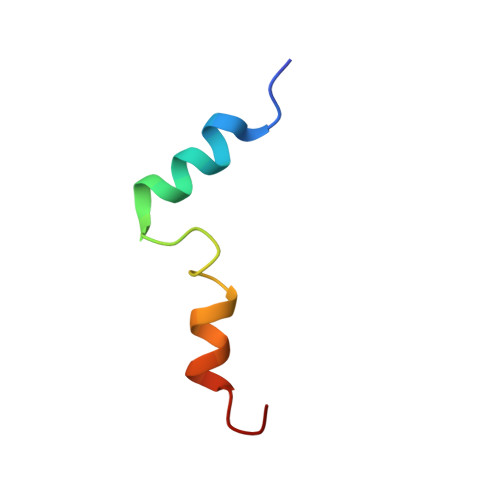Structure determination and conformational change induced by tyrosine phosphorylation of the N-terminal domain of the alpha-chain of pig gastric H+/K+-ATPase
Fujitani, N., Kanagawa, M., Aizawa, T., Ohkubo, T., Kaya, S., Demura, M., Kawano, K., Nishimura, S., Taniguchi, K., Nitta, K.(2003) Biochem Biophys Res Commun 300: 223-229
- PubMed: 12480547
- DOI: https://doi.org/10.1016/s0006-291x(02)02794-8
- Primary Citation of Related Structures:
1IWC, 1IWF - PubMed Abstract:
It has been well established that phosphorylation is an important reaction for the regulation of protein functions. In the N-terminal domain of the alpha-chain of pig gastric H(+)/K(+)-ATPase, reversible sequential phosphorylation occurs at Tyr 10 and Tyr 7. In this study, we determined the structure of the peptide involving the residues from Gly 2 to Gly 34 of pig gastric H(+)/K(+)-ATPase and investigated the tyrosine phosphorylation-induced conformational change using CD and NMR experiments. The solution structure showed that the N-terminal fragment has a helical conformation, and the peptide adopted two alpha-helices in 50% trifluoroethanol (TFE) solvent, suggesting that the peptide has a high helical propensity under hydrophobic conditions. Furthermore, the CD and NMR data suggested that the structure of the N-terminal fragment becomes more disordered as a result of phosphorylation of Tyr 10. This conformational change induced by the phosphorylation of Tyr 10 might be an advantageous reaction for sequential phosphorylation and may be important for regulating the function of H(+)/K(+)-ATPase.
Organizational Affiliation:
Division of Biological Sciences, Graduate School of Science, Hokkaido University, Sapporo 060-0810, Japan.


















